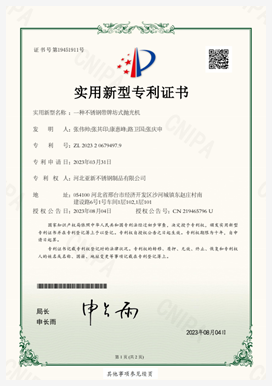combine cutting wheat
The Future of Agriculture Combining and Cutting Wheat
Agriculture has always been at the forefront of human development, providing the food and resources necessary for civilizations to thrive. One of the most significant crops, wheat, serves as a staple food source globally. As populations grow and climate change impacts agricultural practices, innovative techniques such as combine cutting have gained importance in wheat production.
Combine cutting is an advanced agricultural practice that utilizes a specialized machine known as a combine harvester. This machine revolutionizes the traditional method of harvesting by performing multiple tasks in one operation reaping, threshing, and winnowing. The process dramatically increases efficiency and minimizes the time and labor needed for harvesting crops, making it especially crucial in wheat production.
Understanding the Combine Harvester
The combine harvester is a versatile machine designed to handle various tasks. The term combine comes from its ability to combine several agricultural processes into one. With a cutting platform affixed to the front, the harvester can effectively harvest vast fields of wheat in a single pass. The cutting mechanism consists of sharp blades that slice through the stalks of wheat, allowing the machine to gather large quantities rapidly.
The Importance of Timing
Timing is critical when it comes to harvesting wheat. If harvested too early, the grain may not be fully mature, resulting in poor yield and quality. Conversely, if the wheat is left in the field too long, it may suffer from weather-related damage or pest infestations. The efficiency of combine cutting allows farmers to monitor crop maturity closely and plan their harvest for optimal results.
When harvesting wheat with combine cutters, farmers must also consider moisture content. Ideally, wheat should be harvested when it has a moisture content of around 13-15%. If the moisture level is too high, it can lead to spoilage or mold during storage. Conversely, if the wheat is too dry, it may shatter during harvesting, resulting in lost yield. Modern combine harvesters often feature advanced moisture sensors that help farmers make informed decisions about when to cut.
Enhancing Efficiency and Sustainability
combine cutting wheat

The advent of combine cutting has not only improved efficiency but also contributed to more sustainable agricultural practices. Older harvesting methods often required a large number of laborers working for extended periods, leading to high labor costs and inefficiencies. By using combine harvesters, farmers can significantly reduce labor requirements and decrease the risk of crop damage associated with manual harvesting.
Furthermore, the precise nature of combine harvesters allows farmers to minimize waste. The machine ensures that as much grain as possible is collected, reducing the amount of leftover material in the field. Additionally, the straw and chaff produced during the harvesting process can be repurposed for various uses, such as animal bedding or mulch, further enhancing sustainability.
The Role of Technology in Combine Cutting
Modern technology plays a crucial role in the productivity of combine cutting. Many combine harvesters are equipped with GPS technology and yield monitoring systems, enabling farmers to gather data on crop performance in real time. This technology not only helps in making informed decisions during harvesting but also aids in planning for future planting seasons. By analyzing yield data, farmers can adjust their practices, such as crop rotation and fertilization, to optimize output.
Moreover, advancements in machine learning and artificial intelligence are paving the way for even smarter harvesting solutions. These technologies can analyze weather patterns and growth cycles, predicting optimal harvest times and improving overall yield.
Conclusion
Combine cutting wheat represents a significant advancement in agricultural practices. This innovative harvesting method not only enhances efficiency but also contributes to sustainable farming by reducing waste and labor. As the demand for food continues to rise, the agricultural sector must adapt and evolve, embracing technological advancements to ensure food security for future generations.
In summary, as we move forward in a rapidly changing world, the integration of combine cutting in wheat production will play an increasingly vital role. By harnessing the power of technology and innovative practices, we can continue to improve agricultural productivity while safeguarding the environment, leading to a more secure and sustainable food future.
Latest news
-
When to Upgrade Your Old Forage HarvesterNewsJun.05,2025
-
One Forage Harvester for All Your NeedsNewsJun.05,2025
-
Mastering the Grass Reaper MachineNewsJun.05,2025
-
How Small Farms Make Full Use of Wheat ReaperNewsJun.05,2025
-
Harvesting Wheat the Easy Way: Use a Mini Tractor ReaperNewsJun.05,2025
-
Growing Demand for the Mini Tractor Reaper in AsiaNewsJun.05,2025







